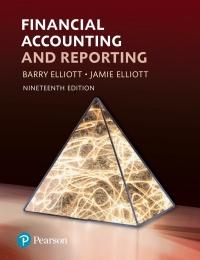
7. A property owner has three properties which she wishes to sell at the prices shown in the second column of Table 1. She goes to Mr. L. K. Jones, a real estate broker, and addresses him as follows: Jones, I'm offering you only property A as of now, and if you don't sell it within a month I'll take all my business, including A, elsewhere. However, if you do sell A within a month, you can have your choice of B or C; if you sell that property within a month of the time it's put in your hands, you can have a month to sell the last one. TABLE 1 Property A B Price $25000 $50000 $100000 Advertising cost $800 $200 $400 Probability of sale 0.7 0.6 0.5 Jones inspects the properties, decides on the amount he would spend advertising each one if it were put in his hands (figures in the third column of Table 1), and assesses his chances of selling each if he tries (figures in the last column of the table); he believes that success in selling any one property would not affect his chances of selling any other. His commission is 4% of the gross. Jones next informs his consultant on decision theory that his financial position is that: 1) He would be indifferent between getting $1500 outright and taking a 50-50 chance at +$6000 or -$1000. 2) He would be indifferent between not betting and betting on a 50-50 chance at +$ 1500 and -$1000. 3) He would be indifferent between getting $3200 for certain or taking a 50-50 chance at +$6000 or +$1500. Given these data: a. If you were Jone's consultant, how would you advise him? b. What is the client's proposition worth to Jones (approximately)? Hint: Replace monetary values by utility values in the decision tree. The client's proposition worth to Jones means the monetary value that is equivalent to the optimal utility value. 7. A property owner has three properties which she wishes to sell at the prices shown in the second column of Table 1. She goes to Mr. L. K. Jones, a real estate broker, and addresses him as follows: Jones, I'm offering you only property A as of now, and if you don't sell it within a month I'll take all my business, including A, elsewhere. However, if you do sell A within a month, you can have your choice of B or C; if you sell that property within a month of the time it's put in your hands, you can have a month to sell the last one. TABLE 1 Property A B Price $25000 $50000 $100000 Advertising cost $800 $200 $400 Probability of sale 0.7 0.6 0.5 Jones inspects the properties, decides on the amount he would spend advertising each one if it were put in his hands (figures in the third column of Table 1), and assesses his chances of selling each if he tries (figures in the last column of the table); he believes that success in selling any one property would not affect his chances of selling any other. His commission is 4% of the gross. Jones next informs his consultant on decision theory that his financial position is that: 1) He would be indifferent between getting $1500 outright and taking a 50-50 chance at +$6000 or -$1000. 2) He would be indifferent between not betting and betting on a 50-50 chance at +$ 1500 and -$1000. 3) He would be indifferent between getting $3200 for certain or taking a 50-50 chance at +$6000 or +$1500. Given these data: a. If you were Jone's consultant, how would you advise him? b. What is the client's proposition worth to Jones (approximately)? Hint: Replace monetary values by utility values in the decision tree. The client's proposition worth to Jones means the monetary value that is equivalent to the optimal utility value







